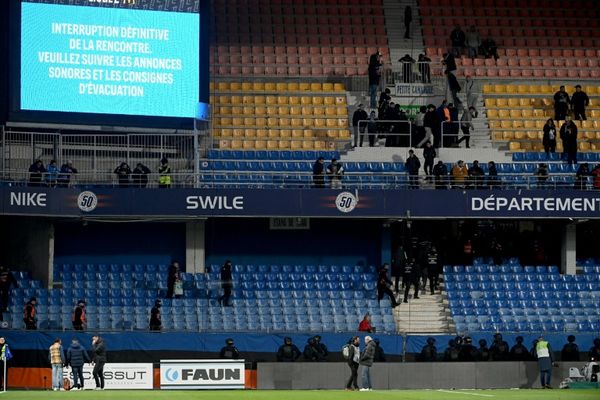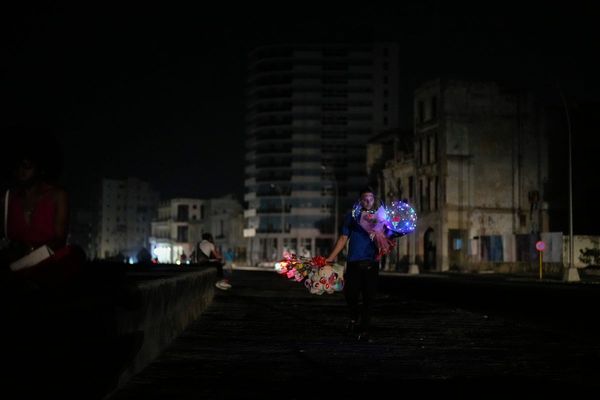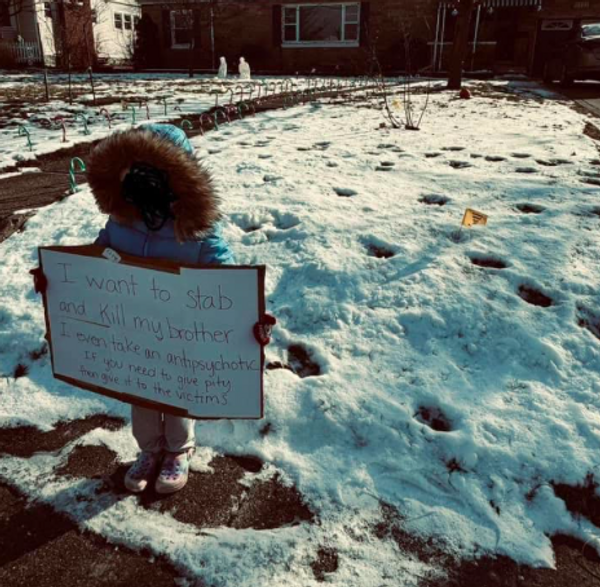
The Dance Of Ram And Ravan
Meet the dancers who portray the Ramayan’s two central characters at the Shriram Bhartiya Kala Kendra Ramleela
Every year, as summer loosens its grip over Delhi and the air begins to smell more festive, Raj Kumar Sharma and Ghanshyam Khichi know for a fact that their photos will be published by all the major newspapers in the capital. Their faces will be made up (they apply all of it themselves), they will be dressed in elegant costumes and the captions will identify them as Ram and Ravan of Ram, a ballet presented by Shriram Bhartiya Kala Kendra.
This isn’t a story of a peon and a CEO who play the exiled king of Ayodhya and the demon king in a neighbourhood Ramleela. Sharma and Khichi are professional dancers at one of the finest institutions of dance in the country. And they’re mildly miffed about the anonymity that comes with it. So this is their story.

This is an extraordinary show. Its script was written by the eminent Hindi writer Ramdhari Singh Dinkar, its sets were designed by the noted lighting designer Tapas Sen. It has been attended by Jawaharlal Nehru, Rajendra Prasad and Indira Gandhi.
There are two – sometimes three – understudies for all main characters. Even then, some performers play more than one role. Raj Kumar Sharma, who plays Ram, once played Ravan because Ravan was stuck in traffic. Ghanshyam Khichi, who plays Ravan, also plays King Dasharath.

The play calls for a variety of dance forms, including traditional martial arts like chhau and Kalaripayattu. “When I began playing Ram, the choreography was changed to suit my style of dancing,” says Sharma. He has one of those age-defying faces, a full head of curly hair with only tiny specks of grey around the edges. In a quintessentially actor fashion, he whispered his real age into my ear after I promised not to reveal it. “Some people who used to come watch the show when they were young are now married and bring their children! They tell me, ‘Sir, aap ekdum waise ke waise hi hain’.” The secret to his youthful looks, he tells them, has to do with the love the audiences shower on him. Perhaps to not jinx it in retrospect, he quickly pats his hair and adds, “Thank God, I still have my hair. We don’t do wigs here.”

The Beginnings
Just like their characters, Ram and Ravan, who were supposedly at two ends of a spectrum, Sharma and Khichi too seem poles apart.
Sharma is the rare dancer who didn’t begin at a very young age. “I was more into Western dance, even in college – kathak was too girlish for me, all that lattak mattak…” He learnt chhau when he was exiting his teens, went to Orissa to complete his training, and began to take dance seriously. “I come from a Punjabi family and Punjabis don’t usually appreciate male classical dance,” he says apologetically. “But when I tell them I’m associated with Bhartiya Kala Kendra, they’re impressed.”
Khichi, 49, comes from a family of dancers. His father taught him kathak, and he in turn taught it to his three sons (one of whom plays Sugreev in this dance drama) – the grandchildren are learning the dance too. His uncle who played the tabla at All India Radio taught him percussion, and later his father also taught him how to sing. “Three things come together to form sangeet: gaayan [vocal], vaadan [instrumental] and nritya [dance],” he says. He is also a music director. “Venus brought out my devotional CD, Sai Main Das Diharoon,” he says.

In the beginning, “we used to do comedy,” Sharma laughs. He played one of the monkeys in the Vanar Sena – “I used to climb up the pole and do gymnastics.” The defining moment was when he played Jataayu, the vulture king. “Everybody liked it, but Shobha ma’am [Shobha Deepak Singh, the director of Shriram Bhartiya Kala Kendra]. She poked me with a safety pin! I nearly jumped out of my skin and screamed. So she said, ‘If a little pin bothered you so much, imagine a bird whose wings have been severed.’ For the first time, after the next show, the audience wasn’t only asking for Ram but for Jataayu because they were so moved by the way I writhed on stage.” Later, Sharma would play Ram. “Ram ke liye bahut khoobsoorat face chahiye, back then my hair was rather stylish and I wore very funky clothes too.”
Khichi had entered the picture much earlier since 1984. At the time, Bhushan Lakandri played Ram for many years. (Lakandri is now a Mumbai-based choreographer best known for Omkara.) “He now works with Hema Malini, but then, he recommended my name – I played heavyweight characters for the many ballets: Balram, Bhim, Sugreev,” he says. “I was the staple Hanuman for 13 years – Ravan was a promotion for me. It won me twice as much acclaim,” he adds. He’s been Ravan for 12 years now.
The God and the Devil
“Audiences love Ravan,” Khichi says. Before every performance, Khichi tries to imbibe the demon king’s fortitude and egotism. “I concentrate on being the most powerful man in the universe – someone that no one can even dare to compete with. And then I enter the stage.”
Actors who play Ravan in other Ramleelas often talk about how overwhelming it can be to play such a character. But Khichi thinks “there’s some positive and negative in every person”. Besides, since he also plays Dasharath, the act itself balances itself out within the play. “In the Kendra’s Chakravyuha ballet, I play Arjun and Jayadrath: Abhimanyu’s father and the man responsible for 16-year-old Abhimanyu’s murder. You have to think, and audiences do think, that both characters are justified in their own way.”

For Ram, Sharma doesn’t have to think about the evil. Only the annoyance of people treating the artist like God. “A few days ago, a buzurg lady held on to my feet and wouldn’t let go. I said to her, ‘Mataji, please get up, the show is over – I’m not in character anymore.’ And she said, ‘You must let me sit at your feet for two minutes. For me, you’ve been the lord since you stepped on stage’.” He often stays on for more than an hour for photoshoots with families. “I don’t fold my hands into a namashkaar at the curtain call anymore. An elderly couple once reprimanded me for it. They said, ‘Beta, theek hai aap artist ho, magar humare liye aap Ram ho’.”
The performance
The Ramayan is one of the oldest stories in the world. It is dramatised in neighbourhoods, schools, public grounds. Dialogues range from passionate to poignant. But here in the ballet, the dialogues are part of the playback. “All emotions are conveyed through the body language, mudras, eye expressions, the smile – through navras: the nine emotions of dance,” says Sharma.
At this stage in their career, Sharma and Khichi have different goals. At some point, Sharma would like to play Ravan, “my favourite character” and as for Khichi, the abiding ambition of every artist: “I’d like my name to be included with the names of some learned men and women.”
Follow @SaudaminiJain on Twitter
*
Of Gods And Pretenders
A delicious cornucopia of technology and mythology defines the Luv Kush Ramleela
A slender, curved line of kohl drawn to resemble a bow: a Lakshman rekha of another kind. Ram is busy applying the finishing touches of make-up to Lakshman’s peach, foundation-laden visage. Lakshman, as expected, has his head reverentially bowed before Ram even as Sita bhabhi relaxes in the vanity van munching on brownies and slurping on a cup of tea.
Did you ask where Ravan is? Well he is off-duty, busy shooting with Akshay Kumar in Mumbai for Airlift, before he air-dashes to Delhi in the morning in his business-class Pushpak to make it in time for Sita Haran. Welcome to the new-age Ramleela, Old Delhi-style.

Next to the Red Fort lawns, the Luv Kush Ramleela Committee has put together a delicious cornucopia of mythology and technology where sound engineers fine tune acoustics to enable life-sized speakers to blare out chaupais. Strobe lights dance above a 100-feet crane, which magically transports the elephant-headed god to the stage for the Ganesh aarti that kicks off proceedings for the evening.
The aarti sets the tone for an emotional sequence showing a grimacing Dashrath pining for his exiled son and the devious Kaikeyi brushing aside his protestations. It is a precursor to Bharat (played by larger-than-life Bhojpuri star Ravi Kishan – he looks heftier in person than in his television appearances) going to meet Ram in the vanvaas for the showpiece Bharat Milap sequence, billed as the highlight for the evening.
The ensemble of actors playing characters from the Ramayan includes a healthy mix of names roped in from the world of movies and television, along with regulars who’ve been enunciating the lines of the Leela for years together.
Meet the Star-Cast
The imports from Mumbai are a big draw at this year’s Luv Kush Ramleela. So, apart from Kishan, you have seasoned comedian Asrani playing Narad, erstwhile leading lady Zarina Wahab essaying Shabari, Bollywood baddie Puneet Issar channelling Parashuram and thespian Surendra Pal Singh enacting Ravan in all his evil intensity.

TV actor Singh, 62, who last played Parashuram in Suryaputra Karan on Sony this year, has earlier donned the wig of Daksha in Devon Ke Dev Mahadev (2014) and the egg-headed Mahamatya Rakshas in Chanakya. Still, why is he best remembered for playing Dronacharya more than a quarter of a century ago, in BR Chopra’s Mahabharat (1988)? “It was a role with gravitas. My character was graceful and understated,” says Singh. “But to play Dashanan, I have to recreate a certain aakrosh [fury] which was inherent in Ravan’s character. He was a mahapandit who was wronged by circumstance. That is an emotion I am attempting to do justice to.”
Glamour and Grind
The status of an imported showstopper rests lightly on Singh’s shoulders. “We are like any other actor in the Leela. People don’t realise how much hard work doing the Ramleela is. We have to memorise a 50-hour script which runs over 10 days continuously and is staged for four-and-a-half-hours every day. It needs a lot of rehearsals,” he says. “Unlike soap operas or the movies, we don’t have the luxury of retakes while enacting the Ramleela,” points out Rupa Dutta, who plays Sita.

Sans make-up and costumes, lounging in her vanity van, Bengali actress Dutta, who played a goddess in Jai Maa Vaishno Devi on 9X, looks every bit the girl from the paara next door that she often plays in Tollywood films. “I’ve been dreaming of doing Sita’s role ever since I was growing up in Kolkata. In my childhood and during school, I somehow ended up playing Hanuman every time,” she remarks. “Unlike movies and saas-bahu serials, we need to be more animated and add a certain throw to our voice and gestures. Otherwise, the lines may get lost on a person sitting 80 feet away from the stage,” says Dutta.

Away from the glamour which these imports exude, Vijay Kumar, 35, who has a day job as a make-up artist with Doordarshan, is content playing the protagonist Ram. Although TV actor Gagan Malik, of Sankatmochan Mahabali Hanuman fame, put in a guest appearance for a couple of days, Singh is the everyday Ram who puts in the hard yards. “I’ve been doing theatre since I was a teenager in the 1990s. But once I learnt the art of acting in the Ramleela from my guru HK Sadanah, I decided this was what I wanted to do,” says Kumar, who doubles as informal make-up artist for Laxman, when he has the time.
The most satisfying moments for this motley group of actors emerge when the more established actors appreciate their histrionics. “Sitaji said my dialogue delivery in the Panchvati Samvad was mind-blowing,” gushes Sunny ‘Lakshman’ Kumar.
Look at the quirks of karma! Perceived as an antagonist by some students of the Film and Television Institute of India, even Gajendra Chauhan, its much-maligned chairman, drew in the crowds when he played Shiv.
All the world’s a leela, did someone say?
Follow @Aasheesh74 on Twitter
*
Where Ram And Ravan Are Friends
Think epic enemies can’t be buddies? Meet the Ram and Ravan behind the stage at the Shri Ram Leela Committee’s performances at Delhi’s Ramlila Maidan
The city is a riot of colour — streets are lit up and vibrant processions are in progress. Scenes from the Ramayan with Ram triumphing over the ten-headed demon king Ravan are being enacted at every other park or street corner. But at Delhi’s Ramlila Maidan, in the green room of the Shri Ram Leela Committee’s Ramleela, things are different. The hostility between Ram and Ravan is missing. The two share a quick joke: Ravan laughs out loud while Ram gives a stifled laugh to avoid spoiling his makeup, even as someone asks them to pose for a selfie together.

The Ramlila Maidan plays host to political rallies through the year. But every Dussehra, the scene changes: Ravan kidnaps Ram’s dutiful wife Sita here, playing out the key scene of Sita Haran, and kicking off the theatrical presentation of the epic that gives the grounds its name. The Ramlila ground stages possibly the oldest Ramleela in Delhi, it was started by Mughal emperor Bahadur Shah Zafar, more than 160 years ago. But backstage, nothing is quite according to the plot.
*
Ashwani Sharma, 36, works with the Bank of Maharashtra. He has taken 11 days off to play Ravan in the play and is also the Ramleela’s director. “It’s my sixth year as Ravan. Each year, I look forward to this time.”
Sharma’s rendezvous with the staging of the epic began when he was in class nine, when he took part in the Delhi Cloth Mills Ramleela. For the past few years, he’s been working with Chandan Art Group, a Karol Bagh theatre troupe started by Chandan Charan Singh. “We’re like family,” Singh says. “Each year, during Ramleela, it’s like a big fat get-together.”
Vijender (he goes by just his first name), a 40-year-old government employee, is Ram this year... and the year before and the years before that. He’s been playing the role for 16 years and has been on stage for longer. He started out playing Ram’s brother, Bharat, at smaller stagings but kept his eyes on the prize: “Ram ke role se hi retire ho jaoonga. I don’t want to try out any other role.”

The team comes together a month before the Ramleela starts. “Rehearsals begin at 6pm and we practise till 9 in the night,” he says. Being senior artists, Sharma and Vijender don’t need to be at every rehearsal for the entire month, but just the last 10 days.
While the makeup artist turns Vijender into Ram, Ravan volunteers to prepare Hanuman’s Vanar Sena. “I get my make-up done in the end. My scene comes later,” says Sharma as he dabs red paint around the mouth of the restless child artist in a red half-dhoti.
*
It’s been 15 years since Sharma’s stage debut. He has performed a variety of roles at various Ramleelas. “I played Dashrath [Ram’s father] and also the roles of most of Ravan’s sons,” he says as he flaunts pictures of himself in the avatars of Meghnad [Ravan’s eldest son] and Dashrath. It’s been a step-by step climb up for him to take over Ravan’s role. “I have had to work in other roles to be able to reproduce Ravan’s strength and his voice.”
Full of drama and powerful imagery, Sita Haran is both Vijender and Sharma’s favourite episode. Vijender likes the scene in particular because: “Main Sita ke viyog mein vilaap karta hoon. I like my dialogue delivery during this scene,” he says shyly.
Their script is in Hindi and has mostly remained the same through the years except that “the scenes might be shown differently. Say, to recreate the Sita Haran, we might use trolleys and cranes to show Sitaji being kidnapped in the flying chariot, instead of being dragged away,” says Sharma.
The actors on stage are supposed to be blessed with divinity. Sharma tells us how people touch his feet and seek his blessings. “It feels so good to see people appreciate my performance.” Vijender very modestly adds: “Hum to Ram ji ke [paaon ke] niche ki dhool-mitti ke barabar bhi nahi hain.”
During this time, the actors stay within the maryada. Kusum, who plays Sita, doesn’t eat onion and garlic, Vijender avoids non-vegetarian food or “anything that hinders us from getting under the skin of the character.”
Since his last performance at the Ramlila grounds in 2001, many changes have seeped in, notes Sharma. “The level of security has tightened. It’s more of a VIP gathering. Regular people can’t just come in.” Perhaps that explains the sparse attendance. Vijendra adds, “The actors of our troupe haven’t got many of the facilities that other Ramlilas across Delhi provide – the stage is not done up as beautifully as others in the city. But it’s said to be Delhi’s oldest Ramleela – something that makes me proud to be performing here.”
A few minutes before his scene, Sharma prostrates himself before a contraption with Ravan’s nine heads that he’ll wear. “I pray to Ravan to help me not commit his mistakes and seek goddess Saraswati’s blessings to help me perform.”
Follow @JainAtisha on Twitter
From HT Brunch, November 1
Follow us on twitter.com/HTBrunch
Connect with us on facebook.com/hindustantimesbrunch







